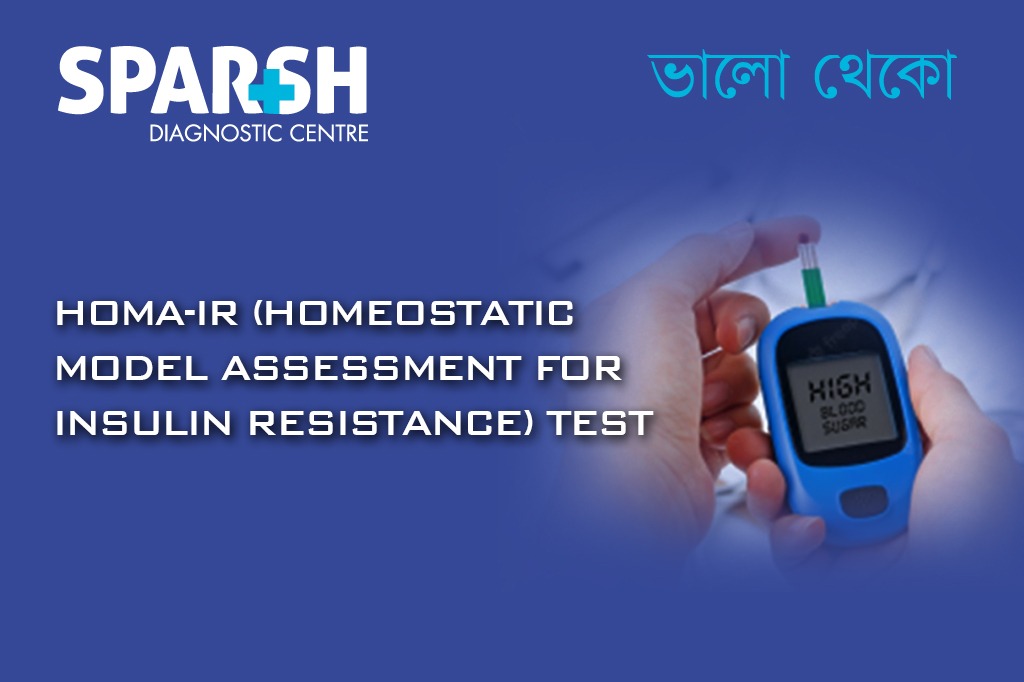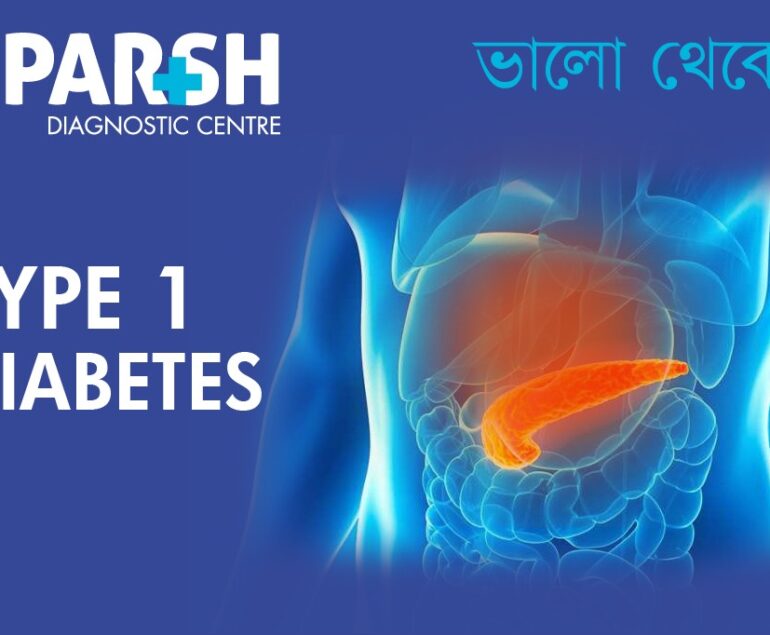Insulin resistance is one of the earliest signs of metabolic imbalance and a key driver behind type 2 diabetes, obesity, and cardiovascular disease. Detecting it early can help prevent or delay these conditions through lifestyle and medical interventions. One of the most widely used methods for assessing insulin resistance in both clinical and research settings is the HOMA-IR test (Homeostatic Model Assessment for Insulin Resistance).
This article explains the principle, calculation, interpretation, and clinical significance of the HOMA-IR test, helping you understand how it aids in managing metabolic health.
What Is HOMA-IR?
The HOMA-IR (Homeostatic Model Assessment for Insulin Resistance) is a mathematical model used to estimate insulin resistance — a condition in which your body’s cells become less responsive to insulin.
When insulin resistance occurs, your pancreas must produce more insulin to keep blood glucose levels normal. Over time, this strain can lead to prediabetes, type 2 diabetes, metabolic syndrome, and even polycystic ovary syndrome (PCOS) in women.
The HOMA-IR test helps doctors understand how well your body is responding to insulin and whether you may be developing insulin resistance.
How the HOMA-IR Test Works
The HOMA-IR model was first introduced in 1985 by Matthews et al. It’s based on fasting blood glucose and fasting insulin levels.
By analyzing the balance between these two parameters, the model estimates how much insulin the pancreas must secrete to maintain normal glucose levels — giving an indirect measure of insulin resistance.
When Is the HOMA-IR test recommended?
Doctors may recommend a HOMA-IR test if you have risk factors or symptoms of insulin resistance.
Common Indications Include:
Unexplained fatigue or weight gain
Acanthosis nigricans (darkened skin patches on neck or armpits)
By detecting insulin resistance early, healthcare providers can design targeted interventions such as dietary modifications, exercise plans, and medications to prevent progression to diabetes.
How Is the HOMA-IR Test Done?
The test involves a simple blood sample taken after an overnight fast (8–12 hours).
Procedure:
You will be asked to fast overnight, avoiding food and beverages except water.
A blood sample is drawn to measure:
Fasting glucose
Fasting insulin
The lab then calculates your HOMA-IR score using the standard formula.
HOMA-IR Reference Ranges
There’s no universal “normal” value for HOMA-IR because it may vary by age, sex, ethnicity, and lab method. However, approximate reference ranges are:
| HOMA-IR Value | Interpretation |
|---|---|
| < 1.0 | Insulin-sensitive (optimal) |
| 1.0 – 2.0 | Normal |
| 2.0 – 2.5 | Early insulin resistance |
| > 2.5 | Insulin resistance likely present |
| > 4.0 | Significant insulin resistance |
It’s important to note that these cutoffs can vary slightly among laboratories. Always interpret your results in consultation with your doctor.
HOMA-IR vs. Other Insulin Resistance Tests
While HOMA-IR is a reliable and practical tool, there are other ways to assess insulin resistance.
1. Fasting Insulin Level
A high fasting insulin alone may indicate insulin resistance but doesn’t account for glucose control.
2. Glucose Tolerance Test (GTT)
Measures how your body handles glucose over time — useful for diagnosing diabetes.
3. QUICKI (Quantitative Insulin Sensitivity Check Index)
A more complex formula based on fasting glucose and insulin — sometimes used in research.
4. Clamp Studies
Hyperinsulinemic-euglycemic clamp is the gold standard for insulin resistance measurement but is complex and expensive — making HOMA-IR a preferred practical alternative.
Factors Affecting HOMA-IR Results
Several factors can influence HOMA-IR readings:
Recent illness or infection
Medications (e.g., steroids, birth control pills, beta-blockers)
Stress and lack of sleep
Obesity or visceral fat
Diet high in sugar and refined carbs
Physical inactivity
For accurate results, ensure you are in a stable state of health and follow fasting instructions correctly.
Clinical Importance of the HOMA-IR Test
HOMA-IR plays an important role in identifying early metabolic dysfunction.
1. Early Detection of Prediabetes
Even before blood sugar levels rise, HOMA-IR can show that the body is compensating by producing excess insulin.
2. PCOS and Fertility
In women with PCOS, insulin resistance can disrupt ovulation and hormone balance. Monitoring HOMA-IR helps guide treatment with lifestyle changes or insulin-sensitizing drugs.
3. Cardiovascular Risk Assessment
High insulin resistance correlates with dyslipidemia, hypertension, and atherosclerosis.
Tracking HOMA-IR can thus be part of heart disease prevention.
4. Monitoring Lifestyle Interventions
Doctors often repeat HOMA-IR testing after dietary, exercise, or medication changes to assess improvements in insulin sensitivity.
Improving Insulin Sensitivity: What You Can Do
If your HOMA-IR score indicates insulin resistance, the good news is that it’s often reversible through lifestyle changes.
1. Balanced Diet
Choose low-glycemic foods such as whole grains, legumes, nuts, and vegetables.
Limit sugar, refined carbs, and processed foods.
Include lean protein and healthy fats (olive oil, avocado, fish).
2. Regular Physical Activity
Combine aerobic activities (walking, cycling) with strength training to boost insulin sensitivity.
3. Maintain a Healthy Weight
Even modest weight loss (5–10% of body weight) can significantly reduce insulin resistance.
4. Get Enough Sleep
Poor sleep disrupts insulin and glucose metabolism — aim for 7–8 hours per night.
5. Manage Stress
Chronic stress raises cortisol, which worsens insulin resistance. Mindfulness and relaxation techniques can help.
6. Medication (if prescribed)
In some cases, your doctor may recommend insulin-sensitizing agents like metformin or GLP-1 agonists.
Advantages of the HOMA-IR Test
Simple and inexpensive
Requires only fasting blood sample
Good correlation with more complex methods
Useful for large-scale screening and follow-ups
Limitations of the Homeostatic Model Assessment for Insulin Resistance Test
While valuable, the HOMA-IR test has limitations:
It’s an indirect estimate, not a direct measurement.
Fasting-only test — doesn’t reflect post-meal insulin response.
Not suitable for type 1 diabetes or insulin-dependent diabetics.
Cutoffs may vary between populations and labs.
Interpreting Your Homeostatic Model Assessment for Insulin Resistance Results
A slightly elevated HOMA-IR doesn’t always mean disease — it’s a warning sign to improve metabolic health.
However, persistently high HOMA-IR values indicate that your body is struggling to maintain normal glucose control, increasing the risk of:
Prediabetes or diabetes
Fatty liver
PCOS
Inflammatory conditions
Your doctor may recommend further investigations or a personalized management plan based on the findings.
Why Early Detection Matters
Insulin resistance develops gradually and can go unnoticed for years. Early detection through the HOMA-IR test allows timely interventions that can:
Prevent type 2 diabetes
Reduce cardiovascular risks
Improve reproductive health
Enhance overall energy and metabolism
By incorporating HOMA-IR screening into routine health checks — especially for at-risk individuals — long-term complications can often be avoided.
Homeostatic Model Assessment for Insulin Resistance and Preventive Healthcare
Modern diagnostic centres like Sparsh Diagnostic Centre, Kolkata offer comprehensive metabolic panels that include fasting glucose, fasting insulin, lipid profile, and other key tests to evaluate metabolic health.
Regular preventive screenings can help you track insulin resistance trends and take early corrective steps to maintain optimal health.
FAQs About HOMA-IR Test
1. What is a normal Homeostatic Model Assessment for Insulin Resistance value?
Generally, a HOMA-IR value below 2.0 is considered normal. Values between 2.0 and 2.5 suggest early insulin resistance, while values above 2.5 indicate significant resistance.
2. Do I need to fast before the Homeostatic Model Assessment for Insulin Resistance test?
Yes. You must fast for 8–12 hours before the test. Avoid food, sugary drinks, and coffee — only water is allowed.
3. Can I calculate Homeostatic Model Assessment for Insulin Resistance at home?
If you have your fasting glucose and insulin results, you can calculate it using the formula. However, interpretation should always be done by a doctor.
4. Is Homeostatic Model Assessment for Insulin Resistance the same as the insulin resistance test?
Yes, HOMA-IR is a method of estimating insulin resistance using fasting glucose and insulin values.
5. What happens if my Homeostatic Model Assessment for Insulin Resistance is high?
High HOMA-IR indicates insulin resistance. Your doctor may recommend lifestyle changes or medications to improve insulin sensitivity and prevent metabolic diseases.
6. How often should I get the Homeostatic Model Assessment for Insulin Resistance test?
If you’re at risk (overweight, have PCOS, prediabetes, or a family history of diabetes), your doctor may suggest testing once or twice a year.
7. Is HOMA-IR test expensive?
It’s relatively affordable compared to more advanced metabolic assessments, as it only requires standard glucose and insulin testing.
The HOMA-IR test is a valuable tool for early detection of insulin resistance, one of the most crucial yet overlooked risk factors for chronic diseases like type 2 diabetes, heart disease, and PCOS.
By assessing your HOMA-IR score through a simple fasting blood test, you can take proactive steps toward improving your metabolic health through diet, exercise, and regular monitoring.
If you’re concerned about insulin resistance or have risk factors for diabetes, consult your doctor and consider getting a HOMA-IR test at a trusted diagnostic centre like Sparsh Diagnostic Centre, Kolkata.
#BhaloTheko
Disclaimer:
No content on this site, regardless of date, should ever be used as a substitute for direct medical advice from your doctor or other qualified clinician.

![]()





